#Akio Fukamachi
Explore tagged Tumblr posts
Text
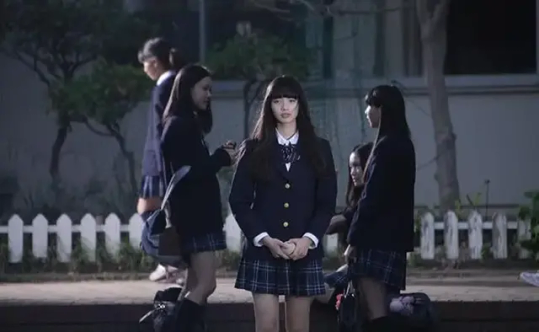
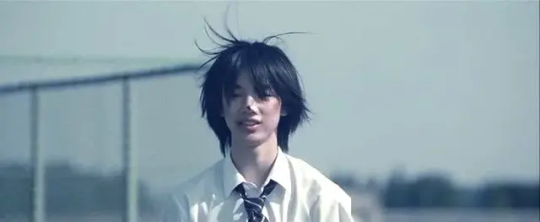





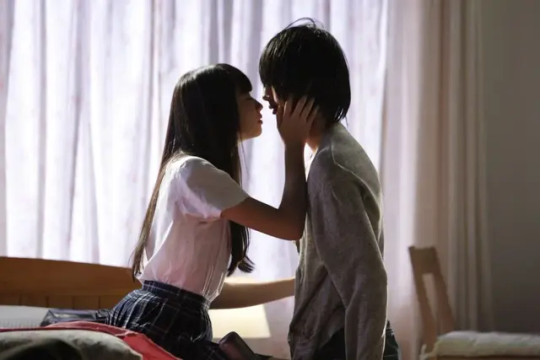



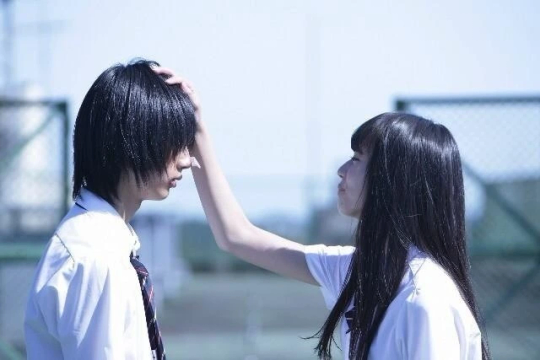




渇き。 The World of Kanako Tetsuya Nakashima, 2014
#japanese film#cinema#movies#film#japanese movies#asian movies#The World of Kanako#渇き。#Tetsuya Nakashima#Hateshinaki Kawaki#Akio Fukamachi#Koji Yakusho#nana komatsu#Satoshi Tsumabuki#Hiroya Shimizu#fumi nikaido#Ai Hashimoto#joe odagiri
7 notes
·
View notes
Text
A Father Goes Looking for His Missing Daughter but All He Finds is EVIL! "The World of Kanako" reviewed! (Drafthouse Films and MVD Visual / Blu-ray)
Purchase “The World of Kanako” From Drafthouse Films and MVD Visual A washed-up former lieutenant detective now working as a lowly security guard becomes the first person to stumble into the aftermath of a gruesome, convenient store triple homicide. After being questioned by police who suspects him of being involved because of his manic-depressive disorder, stemmed by his historical violent…

View On WordPress
#12 Suicidal Teens#2014#3 Year Pregnant#Ai Hashimoto#Akio Fukamachi#ANother#Asuka Kurosawa#Babel#blu-ray#Confessions#Destruction Babies#Drafthouse Films#drugs#Gaga Communications#Hateshinaki Kawaki#Himizu#Hiroya Shimizu#House#Ichi the Killer#japanese#Jun Kunimura#Kamikaze Girls#Koji Yakusho#Mahiro Taksugi#Memoirs of a Geisha#Miako Tadano#Munetaka Aoki#MVD#MVD Visual#MVDVisual
0 notes
Photo

(via HELL DOGS - NELLA CASA DI BAMBU')
Kanetaka Shogo è un poliziotto che lavora da anni sotto copertura nella yazuka, la sua missione e far arrestare il potente leader Toake.
I problemi sorgono quando, dopo anni in cui vive con loro, si lega ai suoi compagni della yakuza e un trauma del suo passato torna a galla.
#azione#crime#diamanta#diversamente intelligente#drama#drama giapponesi#drama universe#film#fukamachi akio#hell dohs#hell dogs nella casa di bambù#jdrama#miyavi#movie#netflix#okada junichi#thriller
1 note
·
View note
Text
HELL DOGS: En la casa de bambú

En esta nueva entrada les volvemos a traer una peli de mafias, en específico una de yakuzas, una de las temáticas de las cuales ya no salen demasiadas, con la esencia de la yakuza original, con ello nos referimos a que lo que normalmente sale al público son cosas más sangrientas (con más Gore), con zombis, de humor, etc. Como un intento de “salirse” del molde de “Todo por el honor” que caracteriza a la yakuza, por este tipo de intentos es que ahora las películas de yakuzas (mafias) que tengan unan trama enteramente dedicada a las guerras y/o traiciones internas.
En este filme vemos la historia de un expolicía que estuvo a nada de presenciar un asesinato en un centro comercial, en el que, por cierto, mataron a su amada. A partir de ese momento la venganza se inserta en la cabeza del protagonista, el cual no se detiene hasta lograr cumplirla. Pero poco después de haber cumplido su venganza la nueva policía lo captura y lo obligan a ser un “espía” e insertarse en una de las bandas yakuzas más grandes.
Una vez dentro, comienza a escalar en posición hasta lograr colocarse como matón principal y guardaespaldas del nuevo jefe de esta mafia, esto le beneficia a su papel de espía por que comienza a saber coas que otros miembros de status más bajo jamás podrían. Con el tiempo se verá inmerso en todas estas guerras y conflictos entre distintas facciones y seguirá subiendo de rango, pero con ello también vienen las dudas sobre la razón por la que entro a la pandilla y su deber con el líder de la banda.
En primera instancia es una buena película, tiene un buen ritmo, y una buena trama, tiene acción donde se necesita, y no nos deja con vacíos argumentales, nos atrevemos a decir, que es una película que no aburre en ningún momento (bueno con la excepción del milésimo recuerdo del trauma del protagonista), pero dejando eso de lado, es bastante buena.
Esta película en contraste con otras es bastante “blanca” con ello decimos que no hay demasiada sangre, si, hay indicios de tortura, y/o asesinatos, pero no los vemos explícitamente en pantalla. Claro con la excepción de las partes de acción, pero incluso en ellas como que se ve de lejitos y o cuando ya acabaron de hacer lo que tenían que hacer. Y creemos que una de las razones por la cual esto fue así, es porque la ser una producción de Netflix y estar orientada al público general, puede que quisieran que fuera mas “digerible” para todas las edades, aunque no sé qué harían unos niños viendo películas de yakuzas.
Este filme es una adaptación, puesto que viene del manga del mismo nombre de Akio Fukamachi, por lo que si lo quieren abajo les dejaremos algún enlace, o si quieren ver la película, está disponible en Netflix, solo que solo está en japones.

Enlaces
Nota, el manga está traducido al inglés.
https://mangakakalot.com/chapter/pr924289/chapter_1
https://www.netflix.com/es/title/81623070?s=a&trkid=13747225&trg=cp&vlang=es&clip=81650602
1 note
·
View note
Photo




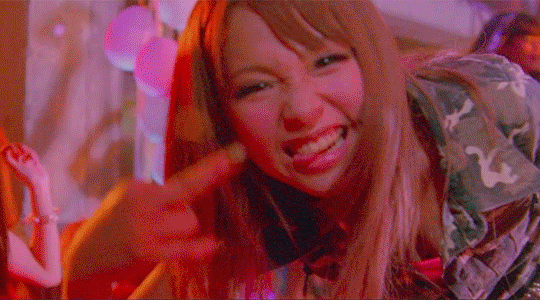



The World of Kanako 渇き。(2014)
#The World of Kanako#渇き。#Kanako Fujishima#Akikazu Fujishima#藤島加奈子#藤島昭和#Nana Komatsu#Koji Yakusho#小松菜奈#役所広司#Tetsuya Nakashima#Akio Fukamachi#中島哲也#深町秋生#Japan#movie#gif#2014
202 notes
·
View notes
Photo




104 notes
·
View notes
Text
The Summit of the Gods Anime Film's Japanese Dub Edition to Open in Japan on July 8
The French-produced anime film adaptation of The Summit of the Gods manga illustrated by Jiro Taniguchi (Kodoku no Gourmet) will be released in Japan on July 8, 2022, in a Japanese dub edition. The film directed by Patrick Imbert was released in over 300 theaters in France in 2021, selling 130,000 tickets.
Teaser trailer:
youtube
RELATED: Netflix Releases Trailer For French "The Summit Of The Gods" Animated Film Adaptation
The manga was based on Baku Yumemakura's (Garouden, Onmyoji) 1998 novel of the same name, which on the 11th Shibata Renzaburo Prize. Taniguchi's manga adaptation also won the Excellence Prize of the 5th Japan Media Arts Festival's manga category in 2001. The novel was previously adapted into a live-action film in 2016, directed by Hideyuki Hirayama (Sword of Desperation).
Its story follows a lone climber, Joji Habu, and a cameraman, Makoto Fukamachi, as they attempt the oxygen-free solo ascent of the Southwest Face of Mount Everest in winter, which is considered impossible, while approaching the greatest mystery in the history of mountaineering, "Did the mountaineer Mallory succeed in making the first ascent of Mount Everest?"
The Japanese dub edition features Kenyu Horiuchi (Mashymre Cello in Mobile Suit Gundam ZZ) as Makoto Fukamachi, Akio Otsuka (Batou in Ghost in the Shell) as Joji Habu, Ryota Osaka (Nariyuki Yuiga in We Never Learn: BOKUBEN) as Habu's junior, Buntaro Kishi, and Asami Imai (Kurisu Makise in Steins;Gate) as Buntaro's sister and Habu's lover, Ryoko.
Japanese poster visual:
RELATED: BELLE, Nikuko, Pompo, The Summit of the Gods Nominated for Annie Awards' Best Indie Feature
Source: "The Summit of the Gods" Japanese official website
(C)Le Sommet des Dieux - 2021 / Julianne Films / Folivari / Melusine Productions / France 3 Cinema / Aura Cinema
By: Mikikazu Komatsu
5 notes
·
View notes
Photo

Hateshinaki Kawaki (果てしなき渴き) Fukamachi Akio (深町秋生) Japanese Mystery literature Zhan Publishing
We drew the cover of ‘Hateshinaki Kawaki(Korean version)’ book.
일본 미스터리 소설, <갈증> 표지를 그렸습니다.
1 note
·
View note
Text
"Helldogs" movie spoiler original synopsis and impression evaluation of the ending. Akio Fukamachi's world view is sublimated through the undercover investigator of "Hell's Dog" starring Junichi Okada!
“Helldogs” movie spoiler original synopsis and impression evaluation of the ending. Akio Fukamachi’s world view is sublimated through the undercover investigator of “Hell’s Dog” starring Junichi Okada!
The novel “Helldogs Hell Dogs” will be made into a movie and will be released nationwide from Friday, September 16, 2022! Akio Fukamachi won the 2004 Kono Mystery ga Sugoi Grand Prize for his debut work, Endless Thirst. After that, “Endless thirst” became “Thirst.” in 2014. ]was made into a movie. The second film adaptation is “Hell Dogs Hell Dogs”, a story about a police officer infiltrating the…

View On WordPress
0 notes
Text

渇き。 The World of Kanako Tetsuya Nakashima, 2014
#japanese film#cinema#movies#film#japanese movies#asian movies#The World of Kanako#渇き。#Tetsuya Nakashima#Hateshinaki Kawaki#Akio Fukamachi#Koji Yakusho#nana komatsu#Satoshi Tsumabuki#Hiroya Shimizu#fumi nikaido#Ai Hashimoto#joe odagiri
3 notes
·
View notes
Text
“The World of Kanako” (2014): Lurid Mystery Examines the Underbelly of a Teenage Girl’s Secret Life
“The World of Kanako” (2014): Lurid Mystery Examines the Underbelly of a Teenage Girl’s Secret Life
Director Tetsuya Nakashima’s new suspense thriller The World of Kanako is one the most visually striking films I have seen this year, and it is also one of the most violent, harrowing, and brutal films of 2015. Its characters live in a maelstrom of vices such as drug addiction, prostitution, and murder, or in quieter worlds of denial or ignorance until these worlds are shattered by ugly truths.…
View On WordPress
#Akio Fukamachi#Asuka Kurosawa#Cure#Hiroya Shimizu#Kiyosha Kurasawa#Koji Yakusho#Miako Tadano#Miki Nakatani#Nana Komatsu#Nobuhiro Monma#Pulse#Shoichi Ato#Shon Hayama#Tetsuya Nakashima#The World of Kanako
1 note
·
View note
Text
Drafthouse Films acquires ‘The World of Kanako’
Drafthouse Films acquires ‘The World of Kanako’
In the vein of films like ICHI THE KILLER, OLDBOY and recently MOEBIUS provocative Asian cinema will always have a place in there hearts of horror fans. The trend is still alive and well as one of the films making noise of this caliber during festivals is Tetsuya Nakashima’s THE WORLD OF KANAKO. When an ex detective is searching for his missing daughter he finds her in the underbelly of a world…
View On WordPress
#Akio Fukamachi#Asian horror#Drafthouse Films#film acquisition#Japan#Kôji Yakusho#Nana Komatsu#North America#North American distribution#Tetsuya Nakashima#THE WORLD OF KANAKO#Toronto International Film Festival
0 notes
Text
The World of Kanako

Japanese Title:渇き
Romaji: Kawaki
Running Time: 113 mins
Release Date: June 27th, 2014 (Japan)
Seen at the BFI London Film Festival
Director: Tetsuya Nakashima
Writer: Tetsuya Nakashima (Screenplay), Akio Fukamachi (Novel),
Starring: Koji Yakusho, Nana Komatsu, Satoshi Tsumabuki, Joe Odagiri, Fumi Nikaido, Ai Hashimoto, Miki Nakatani, Jun Kunimura, Asuka Kurosawa,
Website
On paper The World of Kanako sounds incredibly formulaic: based on a novel by Akio Fukamachi, it’s about an ex-cop and bad father who goes in search of his missing daughter who may be involved in a world of trouble. The World of Kanako is anything but formulaic. It resists falling into cliché by being a visually and aurally staggering assault on the senses so meticulously designed, written, and directed by Tetsuya Nakashima, and acted out by big name actors given the chance to play evil characters that it makes an old plot feel new and exciting.
The film begins with the quote:
An era is only confused by a confused mind – Jean Cocteau
This brilliantly sums up what the characters’ in the film are going through. Everybody is confused about what they know about others, especially their nearest and dearest and, most of all, the siren Kanako, the one everybody is looking for and the big enigma at the heart of the film. None, however, are more confused than lead character Akikazu Fujishima (Yakusho), an ex-police detective bounced out of the force for committing a brutal beating on a civilian, divorced and estranged from his wife Kiriko (Kurosawa) and their daughter Kanako (Komatsu) and caught in a cycle of anger and bitterness. When not working menial part time jobs, he spends his days swilling himself in beer and popping a plethora of prescription pills prescribed by his psychiatrist to keep a mean temper in check.
His life gets a lot more complicated when three people turn up dead at the convenience store he works at as a security guard, two with links to a yakuza group. Then his wife calls to ask for his help tracking down their daughter Kanako who has been missing for eight days. Kiriko would have rather avoided calling him but after finding drugs in Kanako’s room she hopes that Akikzau can sort everything out quietly without getting the police involved. He is soon on the case, piecing together an image of his daughter’s social life. The more he finds the more he discovers that his daughter was not an angel and that others are also trying to track her down…
The World of Kanako is a manual detailing every parent’s worst nightmare about what can happen to their children as it touches on a number of real life crises and issues like drugs and gangsters and then cranks up the action to extreme levels. What makes this mainstream star packed movie stand out is the depth and breadth of darkness that surrounds everyone and the extent to which both director and cast are willing to show it through the extreme behaviour of a set of really nasty characters who quite willingly torture, maim and betray each other. There are few decent people in the film and a lot of horrifying scenes to get through. As a result, it has drawn massive controversy back in its native Japan, a county which has a film industry increasingly releasing safe adaptations of novels and TV shows, and do you know what? Good. The violence and grit and directorial finesse here is shock therapy for the industry, it is stunning and viscerally effective, a horror film rooted in everyday life and the reality in Japan it shows and exaggerates makes it all the more terrifying. As much as the violence will get highlighted, brilliantly, the film grips viewer’s attention intellectually because all of what happens on screen, every editing technique and the way the script unfolds, provides a fascinating take on themes such as our inability to truly know what is going on in the mind of another person and what we are capable of. Through Akikazu’s investigation and the recollections of others we delve into a film that plays with secrets, memory, and perspectives in the most extreme ways possible.
Do you even know anything about Kanako?
Right from the start, Nakashima drops the viewer into a maelstrom of multiple scenes from multiple perspectives at multiple places in the film’s year-long timeline which is bookended by Christmas at the start and finish.
Through a series of fast cross cuts full of different visual and aural styles. A peaceful midnight mass with hymns sung by respectable families is contrasted with salacious and seedy images of clubs full of scantily clad girls and guys who deal out drugs and violence. In this short sequence Nakashima teases mysterious and intriguing backstories and character introductions at a dizzying pace to disorientate and intrigue viewers with contradictory emotions. The traditional thriller narrative is made alien through this overwhelming sensory overload. It is as if the script has been torn up and scattered and pasted back together by a Beat Poet. The film continues in this vein by expanding upon and interweaving the seemingly too numerous scenes and stitching them together to create an elegantly unfolding story told from multiple perspectives from the main players who are soon shoved together as Kanako’s world comes into focus.
As well as constantly disturbing audience expectations about the direction of the narrative, this allows Nakashima to work on another layer as he utilises every editing and directing tool to constantly influence and undermine our opinions of events and display the different emotions and perspectives of each person which reveals the truth of the enigma at the centre of the film, Kanako, and allows the story to delve deep into the darker aspects of modern Japan.
Our first encounters with Kanako are initiated through Akikazu’s witness testimonies, flashbacks from his blurred recollections and a bullied schoolboy’s daydreams and treasured interactions with her. She is beautiful. She is popular. She is angelic.
These early scenes are shot in gentle, dreamlike ways, suffused in calming colours like white and blue, the camera holding firm and the editing is calmer than at any other point in the film, the takes are a little longer and majestic. Here, Kanako is a beauty glimpsed from afar and idolised by those around her. She is the luminous presence at the edge of the darkness these guys are going through. She tells her father she loves him and offers sympathy to the boy after watching him take brutal and humiliating beatings. She is a heavenly being that has descended to offer care and kind words to the wounded and persecuted.
It is easy to see how people can love such a person who offers succour but as the movie progresses and the scenes play out and are explored there is something off about her behaviour. She seems amused by the bullying, standing by and watching, a sardonic smile teasing her lips as she pokes and prods the boy’s wounds. That, “I love you,” she whispers to her father is a little too leading, their proximity and the positions of their bodies a little too intimate. Is Kanako really as innocent as many people think?

As more characters are introduced, the picture surrounding Kanako becomes murkier as contradictory views and scenes play out and so the visuals change. The costumes Kanako is dressed in stop being respectable and become shocking, daring and she wears garish make-up. The settings and visual styles become markedly different, schools are replaced by clubs, clean cut beautiful students are replaced by gangsters and addicts taking drugs, the classical music and twee guitar strumming of daydreams becomes hyperactive J-Pop, the colour schemes and set-designs becoming more aggressive as white is replaced by oranges, reds and psychedelic colours with contrasted with blackness, the editing faster and blurrier. All the while, Kanako remains hard to read. Just what is going on with her?
The man holding the investigation together is Akikazu.
Sometimes I don’t have a clue what she’s really thinking
Akikazu is a singular protagonist. If his daughter Kanako is a spectre who haunts everyone and gradually materialises over the course of the story, Akikazu is the engine of destruction that powers the narrative and brings everything to light.
Although he initially fulfils the archetype of being an old school cop and bad father, slightly hapless and someone who we would normally root for, from the first shot of him to the last he proves himself to be a violent b*stard and becomes a beast we should despise rather than empathise with as is normally the case with films.
Akikazu doesn’t quite follow the trail of the mystery, more like he barrels through, taking beatings and meting out violence himself. His modus operandi is confrontation and subjugation, shouting at and slapping people around to get what he wants, quick to bully women and children and not afraid of men either. After quickly teaming up with his wife, we see exactly why she left him as he goes on to exercise verbal and physical violence against her that will immediately set the audience against him, a feeling emphasised when we realise that whatever rage he has shown is not some recent manifestation but an intrinsic part of his character. This is revealed as routine in a heart-breaking moment where Kiriko stoically accepts this as the price for getting her daughter back falls back into a well-practiced ways of applying make-up to cover her wounds.
There are flashes of the sly old detective shown in Akikazu throughout the movie. He outfoxes seemingly smarter opponents and he shows his powers of deduction and evidence gathering as he searches through his daughter’s possessions and spotting clues to changing behaviour, questions her friends and tracks down sources of information, but his violence always hampers him, it is hardwired into his character and makes him a unique and compelling protagonist to follow even if we hate him.
Yakusho plays him with great gusto. Through massive amounts of physical energy and movement, his costumes and behaviour, he morphs from the genial everyman that his fans will know and reveals his dark side in a searing performance that terrifies and intrigues. Hair frazzled, his sweat covered face contorted by anger or ferocious laughter over the mayhem he causes, eyes wild with emotion, he walks around dressed like a yakuza with an aloha shirt and a crumpled white suit which gets increasingly bloodied as he takes beatings and deals them out all with a funk music accompaniment like the old-school detective he is.
Crucially for the film Yakusho conveys that underneath all that violence is the real sense of seething, unexplainable and all-consuming rage driven by feelings for a daughter he doesn’t know and emotions that he himself struggles to understand that forces him to continue his journey with his relentless attitude. It’s not without reason that the most dominant colour in his part of the film is blood red, the colour design emphasising his inner rage, the shaky camera-work emphasising his lack of a grip on his anger because violence is how he communicates as he hurts men, women and children, and performs evil acts. It’s exciting and scary to watch because the film can go anywhere with a protagonist like that.
As evil as he can be, seeing him lose his mind so often becomes blackly humorous because the violence rises to such absurd operatic levels as he stumbles from one bad situation into another with punches soon trumped by knives, guns, and cars as he and his enemies battle each other. Each confrontation becomes an unexpected treat of black comedy and blood-letting that leavened the serious nature of the film. This is a testament to Koji Yakusho’s acting because I kept watching and even enjoying the action because of his ability to be monstrous and funny.
As long as I am alive, she is alive
That Koji Yakusho agreed to do the work is amazing because it is a controversial role. As Tetsuya Nakashima revealed during the post-movie Q&A, actors make their money from ads and playing bad characters in controversial film may hurt their chances but it seems that Koji and the rest of the cast were up for playing these roles where they could be evil. Amusingly, Nakashima revealed that Koji destroys things he is paid to advertise! Everyone is strong and there are some who use the script’s battery of nasty characters to offer heightened performances that go beyond the convincing and, much like Koji Yakusho, achieve a balance between the serious and even the playful with their absurd and mannered actions. Jo Odagiri is pitch-black horrific as a brutal killer but his passion for violence leads to some amusing scenes. Fumi Nikaido has a small role but is especially tragic as a drug user respectively.
There are few likeable characters in the film. Nakashima paints humanity as a cesspool but there are some characters who bring a little light relief from the darkness like Satoshi Tsumabuki’s detective Asai, the younger and smug foil to Akikazu’s old and brutish detective.
He is a dandyish, slick, slightly camp presence skipping around crime scenes, delicately eating desserts surrounded by a coterie of detectives and always talking to Yakusho, his senior, with a condescending tone. “Seeeeemmmmpaaaaiiii,” he calls out to his former superior, mocking Akikazu’s predicament. Behind his lovely smile and seemingly honest facade is a sly fox who wants Akikazu to cause damage and self-destruct so he can pick up the pieces.

Satoshi Tsumabuki has rocketed to near the top of my favourite actors after this performance.
New actress Nana Komatsu is a revelation as Kanako. Despite being surrounded by more experienced actresses, much like her character, Komatsu is able to wrap all the attention around her with her mere presence. She has a background in modelling and although this is her first role she plays the character perfectly precisely because she is new and hard to read. She has the beauty, confidence, and style to dictate scenes and be the girl others go crazy over but there is also something enigmatic about her which makes her character work as the bewildering presence, a black hole that sucks others in.

The World of Kanako is a thriller cranked up to the extreme in style and performances. Visually complex and awe-inspiring with actors and actresses willing to take risks by performing dangerous roles and playing monsters doing horrific things. It will sicken and horrify and that is the point as it plays out like a horror story to show the perils and pitfalls of modern society and people caught in a confusing destructive darkness. It is an experience worth having just to see how far one of Japan’s leading auteurs is willing to go to deliver a shocking story.

The World of Kanako is a searing tour-de-force of acting, direction and design that takes something old and through heightened violence and shocks turns it into something truly, searingly, gut-churningly new, a film that uses the oft-explored disconnect between parents and children to create a modern day crime thriller of operatic proportions that shocks and entertains (even when it’s morally best not to enjoy the proceedings). I don’t know if my review conveyed that but I really enjoyed it all. I am so glad I saw this in a cinema because having it blown up on the big screen made the impact even harder!
4.5/5
So yeah, I really enjoyed watching the film and I am glad I saw it in a cinema. Even though I have written about it at length I have given little about the film away and you can enjoy it when it gets a release next year courtesy of Third Window Films.
Here are images I didn’t get the chance to put in the main body of the review. More Tsumabuki:
#gallery-0-3 { margin: auto; } #gallery-0-3 .gallery-item { float: left; margin-top: 10px; text-align: center; width: 33%; } #gallery-0-3 img { border: 2px solid #cfcfcf; } #gallery-0-3 .gallery-caption { margin-left: 0; } /* see gallery_shortcode() in wp-includes/media.php */
Also, what a great poster at the top of the review!
Here are some of the tracks played in the film:
I also got to meet the director and we chatted via the interpreter about the casting of Nana Komatsu. I asked Tetsuya Nakashima why he cast her instead of a more established actress like Ai Hashimoto and Fumi Nikaido. Here’s part of his reply:
Nana Komatsu had never acted before. She’s actually a fashion model but I wanted someone who could wear clothes and create a scene. There are many actresses I could have asked but I wanted someone who wouldn’t think too much about the role because it was very illusive and I did not want someone who would project too much to the audience.
The World of Kanako 渇き (2014) The World of Kanako Japanese Title:渇き Romaji: Kawaki Running Time: 113 mins Release Date:
#Ai Hashimoto#Akio Fukamachi#Asuka Kurosawa#BFI London Film Festival 2014#Fumi Nikaido#Japanese Film#Joe Odagiri#Jun Kunimura#Koji Yakusho#Miki Nakatani#Nana Komatsu#Satoshi Tsumabuki#Tetsuya Nakashima#The World of Kanako#Third Window Films
11 notes
·
View notes
Text











渇き。 The World of Kanako Tetsuya Nakashima, 2014
#japanese film#cinema#movies#film#japanese movies#asian movies#The World of Kanako#渇き。#Tetsuya Nakashima#Hateshinaki Kawaki#Akio Fukamachi#Koji Yakusho#nana komatsu#Satoshi Tsumabuki#Hiroya Shimizu#fumi nikaido#Ai Hashimoto#joe odagiri
4 notes
·
View notes
Text



渇き。 The World of Kanako Tetsuya Nakashima, 2014
#japanese film#cinema#movies#film#japanese movies#asian movies#The World of Kanako#渇き。#Tetsuya Nakashima#Hateshinaki Kawaki#Akio Fukamachi#Koji Yakusho#nana komatsu#Satoshi Tsumabuki#Hiroya Shimizu#fumi nikaido#Ai Hashimoto#joe odagiri
2 notes
·
View notes
Text



渇き。 The World of Kanako Tetsuya Nakashima, 2014
#japanese film#cinema#movies#film#japanese movies#asian movies#The World of Kanako#渇き。#Tetsuya Nakashima#Hateshinaki Kawaki#Akio Fukamachi#Koji Yakusho#nana komatsu#Satoshi Tsumabuki#Hiroya Shimizu#fumi nikaido#Ai Hashimoto#joe odagiri
3 notes
·
View notes